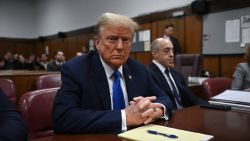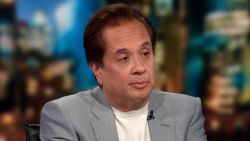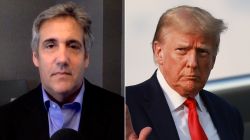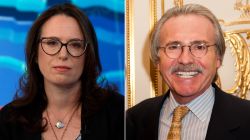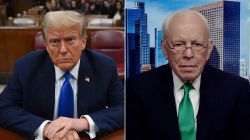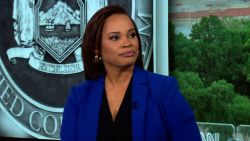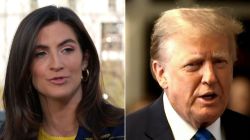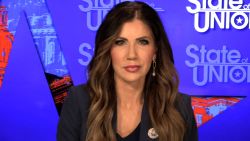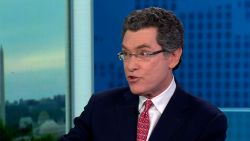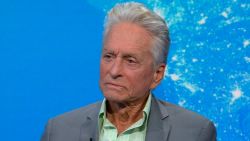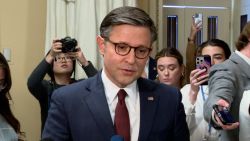Adapted from Jim Acosta’s “The Enemy of the People: A Dangerous Time to Tell the Truth in America” set for release Tuesday
It was February 16, 2017, and President Donald J. Trump had just held a news conference in the White House East Room to confront questions about his decision to fire his national security adviser, Michael Flynn. As he was jousting with reporters over the still unfolding details of the Russia investigation, Trump offered a new twist on his recent line of attack on the press.
“I’m changing it from fake news, though,” Trump said in response to a question from me.
“Very fake news,” the President added, to laughter in the room. Trump has his share of flaws but comic timing isn’t one of them.
Later in the afternoon, the phone rang. It was one of the President’s most trusted aides, Hope Hicks.
“I wanted to let you know that I spoke with the President and he wants you to know that he thought you were very professional today,” Hicks said.
“He said, ‘Jim gets it,’ ” she added.
Hicks had offered an insight into Trump’s thinking. When the President called the press “fake news,” Hicks was essentially saying this was just an expression, part of the act, something I apparently “get.” Other Trump aides and advisers confirmed this assessment.
But what may have begun as something of a reality TV-style parlor trick has mutated into a full-blown assault on the American free press, one that the President apparently can no longer control.
The following day, Trump demonstrated he was fully capable of escalating his rhetoric aimed at the news media. It was a dark and dangerous tweet that may well define much of his presidency.
“The FAKE NEWS media (failing @nytimes, @NBCNews, @ABC, @CBS, @CNN) is not my enemy, it is the enemy of the American People!” he wrote.
More than 30 current and former administration officials, as well as other outside Trump advisers and high-ranking GOP officials, spoke with me for my book “The Enemy of the People: A Dangerous Time to Tell the Truth in America,” set for release Tuesday. Other officials from the administration, most notably Trump and White House press secretary Sanders, did not respond to repeated requests for an interview.
Asked where the term “the enemy of the people” came from, three former and current senior White House officials pointed the finger at the conservative firebrand Steve Bannon, an ex-West Wing strategist himself, as having coined the villainous label. Yet, in an interview, Bannon said that’s not quite the case. The former Breitbart executive insisted he and Trump had conjured up the anti-press catchphrase together.
“I think it’s safe to say that we both came up with it in discussion,” Bannon said, making sure Trump received part of the credit.
“I think I threw out ‘opposition media party’ first, and then he threw out ‘fake news is the enemy of the people,’ ” Bannon added, referring to his own description of journalists as the “opposition” during the early days of the Trump administration.
OPINION: Sam Donaldson: What Jim Acosta is doing is exactly right
Discounting the notion that such rhetoric could lead to violence against journalists, Bannon was careful to draw what he thought was an important distinction, noting that Trump doesn’t regard all journalists as the “enemy.” Only those reporters seen by the President as purveyors of “fake news” fit into that category, Bannon continued.
White House counselor Kellyanne Conway, in an interview for my book, said she did not agree with the use of that expression.
“It’s fraught. It’s danger –, ” Conway stopped midsentence, catching herself before saying “dangerous.”
“I think calling the President a Russian asset is dangerous,” she added.
“I don’t use that phrase. Yet there is ample evidence that the media are often the enemy of the relevant,” she said.
One senior White House official rejected Bannon’s comments, saying he should be taking full responsibility for the “enemy of the people” term.
” ‘Enemy of the people’ was first said in this White House by somebody who spent all of his time talking to the media,” the senior official said, referring to Bannon. “It’s absolutely Bannon.”
Still, the original purpose of the expression was to taunt members of the press, not trigger threatening reactions from Trump supporters, the official said.
“It’s meant to incite the media. Not the people,” the official continued.
Bannon explained that Trump’s use of the “enemy” label should be viewed as part of a larger media strategy aimed at mastering the nation’s nonstop political news cycle, the same approach that allowed Trump to cut through 16 GOP presidential candidates like a “scythe through grass,” as Bannon put it.
Still, some of the President’s supporters have lashed out at the press after absorbing this volatile rhetoric, behaving in ways that have left journalists feeling endangered. This phenomenon can be seen in the death threats streaming into the social media accounts of news anchors and reporters who cover Trump on a regular basis. Popular apps such as Twitter, Instagram and Facebook have done little to stem the flow of these violent messages.
“If Trump is removed from office in any way, you are dead,” read one message posted on my Instagram account.
Self-described Trump supporters have left messages recommending that I be castrated, decapitated and set on fire. Theirs was the same kind of hatred that had driven Trump supporter Cesar Sayoc to send pipe bombs to CNN and Democratic targets shortly before the midterm elections in 2018. His vivid threats directed at me on Twitter went undetected until authorities captured him.
Handling falsehoods and ‘alternative facts’
Trump’s unprecedented verbal attacks on the press, his chaotic management style and his assaults on the truth have often confounded his own advisers, placing some members of his beleaguered team in the position of explaining the President’s outright falsehoods.
After then-White House press secretary Sean Spicer falsely claimed in January 2017 that Trump had drawn the largest inauguration crowd in US history, Conway came to the spokesman’s defense with a catchphrase that she now regrets.
” ‘Alternative facts’ was a slip of the tongue. I rushed through ‘alternative information and additional facts,’ and it got mushed together,” Conway said. “It was never meant to be Orwellian or to excuse lies.”
But Conway and Spicer had their stumbles as they were attempting to explain outbursts from a President who excelled at creating disorder. As a former senior White House official said, much of Trump’s chaotic behavior was by design.
“He rules by instability. He wins by making everything around him unstable,” the official told me. That way, the official said, Trump controls the chaos.
Intense frustration with Trump’s management style has also led some senior White House and administration officials to arrive at damning assessments of the President.
“The President’s insane,” one senior official said, in a moment of exasperation with Trump’s behavior behind the scenes.
Asked what the aide meant, the official complained Trump failed to understand the constraints on the executive branch built into the US Constitution by the nation’s Founding Fathers, the guardrails installed to protect American democracy from the possibility of a rogue president.
What were the rules for appointing Cabinet officials and how long can acting secretaries stay on the job, Trump wanted to know, according to the official.
Unpredictable behavior abroad and at home
Trump’s behavior around foreign leaders, such as Russian President Vladimir Putin, also puzzled senior members of his national security team.
Around the time of Putin’s reelection in March 2018, Trump wanted to send the Russian leader a news clipping, signed by him, to wish the ex-KGB agent good luck, a senior administration official with direct knowledge of the situation said.
“Vladimir, you’re going to do great,” Trump was going to tell Putin, according to the official, who viewed the clipping but cautioned it was not certain whether the message was ultimately sent off to the Russian President. Still, the official raised concerns about Trump’s gesture with other aides, worried that the clipping, should it somehow be released, could be an embarrassment for Trump and prompt more questions about the relationship between the two leaders.
“Other people were aware,” the official said.
The official could not explain why Trump was so cozy with Putin.
“I can’t answer that question,” the official confessed.
Trump’s unpredictable behavior with foreign leaders was a constant source of consternation for former chief of staff John Kelly, who did not hide his unhappiness from other West Wing aides.
“You didn’t leave him alone, did you?” Kelly once blurted out to a senior aide, the official said.
Other officials in the administration questioned Trump’s handling of his domestic agenda, such as his crackdown on migrants crossing the border with Mexico.
In a rare public expression of concern with an administration initiative, Conway said she disagreed with the “zero-tolerance” policy that resulted in family separations at the border in 2018.
“As a mother, as a Catholic, as a person of conscience, I don’t want children ripped from their parents,” Conway said with regret, before adding she also didn’t want to see families taken advantage of by “smugglers and coyotes,” a comment more in line with the administration’s talking points on immigration.
In the two years since Trump’s election, one constant of his time in office has been his rallies. During the 2016 campaign, Trump began his assault on the media, referring to news outlets as “dishonest” and “disgusting.” That routine has continued right into Trump’s presidency as he has excited his base with rhetoric steeped in hostility toward journalists. Some of the President’s supporters have joined in on the act, hurling insults at reporters inside the press filing spaces at the rallies.
“You’re scum. You’re a scumbag,” yelled one man repeatedly for approximately 30 minutes at a rally last year in Nashville.
“Out, out, out, out,” shrieked an elderly woman at a rally later in the year in Columbia, South Carolina, whipping the crowd of thousands into a frenzy as she insisted that the CNN crew be ejected from the venue.
Another woman at the Columbia rally warned me to tone down my questions to both the President and press secretary Sanders or face the consequences.
“What’s going to happen is we’re going to end up with a civil war. You’re going to have people shooting people,” warned the woman.
At another rally a few weeks later in Tampa, Florida, large group of Trump supporters screamed and flashed middle fingers at me. Trump later retweeted a video of the incident, catapulting its viewership into the millions. The episode was followed by a string of disturbing messages left on my social media accounts.
“Hopefully he gets beaten to death at one soon,” read one message left on my Instagram account.



